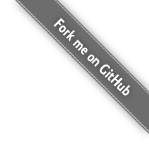Spring中BeanFactory和FactoryBean的区别以及使用场景
文章目录
BeanFactory和FactoryBean的区别与使用场景是Spring面试中的高频题之一,本文基于网上资料和个人理解,简要说明他们之间的异同以及使用场景。
组件说明
BeanFactory
在BeanFactory的API中,一开始就有如下一句描述
The root interface for accessing a Spring bean container
这句话指明了BeanFactory在Spring家族中的地位,它是操作Spring容器、获取Spring Bean的根接口。从字面意思可以看出它是一个Bean工厂,其内部采用了工厂模式,通过它们我们可进行创建Bean、获取Bean等操作1。
在学习与使用Spring过程中接触到的ApplicaitonContext、AnnotationConfigApplicastionContext、ClassPathXmlApplicationContext等都是其子接口和具体的实现类,它是我们在Spring框架中接触最多的系统接口,下图中的UML展示了BeanFactory及其子接口和实现类之间的关系2

下述代码展示了BeanFactory所包含的全部15个接口方法,它们涵盖了Spring中对Bean对象的各种读取操作,若经常使用Spring这些接口方法看起来就会很熟悉。
BeanFactory接口(点击可展开)
public interface BeanFactory {
String FACTORY_BEAN_PREFIX = "&";
Object getBean(String name) throws BeansException;
<T> T getBean(String name, Class<T> requiredType) throws BeansException;
Object getBean(String name, Object... args) throws BeansException;
<T> T getBean(Class<T> requiredType) throws BeansException;
<T> T getBean(Class<T> requiredType, Object... args) throws BeansException;
<T> ObjectProvider<T> getBeanProvider(Class<T> requiredType);
<T> ObjectProvider<T> getBeanProvider(ResolvableType requiredType);
boolean containsBean(String name);
boolean isSingleton(String name) throws NoSuchBeanDefinitionException;
boolean isPrototype(String name) throws NoSuchBeanDefinitionException;
boolean isTypeMatch(String name, ResolvableType typeToMatch) throws NoSuchBeanDefinitionException;
boolean isTypeMatch(String name, Class<?> typeToMatch) throws NoSuchBeanDefinitionException;
@Nullable
Class<?> getType(String name) throws NoSuchBeanDefinitionException;
@Nullable
Class<?> getType(String name, boolean allowFactoryBeanInit) throws NoSuchBeanDefinitionException;
String[] getAliases(String name);
}
由于BeanFactory是操作Spring容器和对象的根接口,Spring官方要求它尽可能的支持Bean生命周期的各种接口,基于Spring官方API的描述,其完整的方法链和顺序如下:
- BeanNameAware’s
setBeanName - BeanClassLoaderAware’s
setBeanClassLoader - BeanFactoryAware’s
setBeanFactory - EnvironmentAware’s
setEnvironment - EmbeddedValueResolverAware’s
setEmbeddedValueResolver - ResourceLoaderAware’s
setResourceLoader(only applicable when running in an application context) - ApplicationEventPublisherAware’s
setApplicationEventPublisher(only applicable when running in an application context) - MessageSourceAware’s
setMessageSource(only applicable when running in an application context) - ApplicationContextAware’s
setApplicationContext(only applicable when running in an application context) - ServletContextAware’s
setServletContext(only applicable when running in a web application context) postProcessBeforeInitializationmethods of BeanPostProcessors- InitializingBean’s
afterPropertiesSet - a custom
init-methoddefinition postProcessAfterInitializationmethods of BeanPostProcessors
上述初始化链可很好的帮我们回答面试中另外几个常见的问题:
Spring中Bean如何初始化- 描述
Spring中Bean的生命周期
FactoryBean
FactoryBean从名字就能看出来是一个Bean,但不是普通的Bean,否则Spring作者为啥要单独的创建这个接口呢?FactoryBean也是一个接口,其源码如下,从中可以看出该接口只有3个方法,与BeanFactory相比数量大为减少,同时这3个接口方法的作用也同BeanFactory中的相关方法类似。
public interface FactoryBean<T> {
String OBJECT_TYPE_ATTRIBUTE = "factoryBeanObjectType";
@Nullable
T getObject() throws Exception;
@Nullable
Class<?> getObjectType();
default boolean isSingleton() {
return true;
}
}
通过上述代码能够获取的信息依旧有限,在FactoryBean的官方API中有如下描述
Interface to be implemented by objects used within a
BeanFactorywhich are themselves factories for individual objects. If a bean implements this interface, it is used as a factory for an object to expose, not directly as a bean instance that will be exposed itself.NB: A bean that implements this interface cannot be used as a normal bean. A FactoryBean is defined in a bean style, but the object exposed for bean references (
getObject()) is always the object that it creates.
上述文档的主要结论如下:
FactoryBean不是一个普通的Bean,它实际上是一个用于创建特定bean的工厂- 通过实现
FactoryBean接口,可通过暴露对象的方式创建特定bean对象,而这个bean对象本身不会暴露
到这里虽然二者的区别清楚了,但是FactoryBean的使用场景还是不清晰,在https://spring.io/blog/2011/08/09/what-s-a-factorybean这篇文章中,Spring的作者之一JOSH LONG用如下文字阐述了FactoryBean的使用场景
A
FactoryBeanis a pattern to encapsulate interesting object construction logic in a class. It might be used, for example, to encode the construction of a complex object graph in a reusable way. Often this is used to construct complex objects that have many dependencies. It might also be used when the construction logic itself is highly volatile and depends on the configuration. AFactoryBeanis also useful to help Spring construct objects that it couldn’t easily construct itself.
从上述文字中可以看出FactoryBean主要用于构建一些实例化过程较为复杂或有配置依赖的对象(即非普通POJO),并将其交给Spring容器管理。
Spring框架本身就自带了实现FactoryBean的70多个接口,如ProxyFactoryBean、MapFactoryBean、PropertiesFactoryBean等,从个人角度来看它们要么理解起来较为复杂,要么使用较少不具有代表性,下面以MyBatis-Spring中的SqlSessionFactoryBean为例来了解其用法
@Override
public SqlSessionFactory getObject() throws Exception {
if (this.sqlSessionFactory == null) {
afterPropertiesSet();
}
return this.sqlSessionFactory;
}
// 参数校验与对象创建
public void afterPropertiesSet() throws Exception {
notNull(dataSource, "Property 'dataSource' is required");
notNull(sqlSessionFactoryBuilder, "Property 'sqlSessionFactoryBuilder' is required");
state((configuration == null && configLocation == null) || !(configuration != null && configLocation != null),
"Property 'configuration' and 'configLocation' can not specified with together");
this.sqlSessionFactory = buildSqlSessionFactory();
}
// 基于配置文件创建具体的SqlSessionFactory
protected SqlSessionFactory buildSqlSessionFactory() throws Exception {
// 各种检查代码
return this.sqlSessionFactoryBuilder.build(targetConfiguration);
}
在创建SqlSessionFactory时需要依赖数据库的配置等一些配置信息,但这些配置信息若通过BeanFactory以传统的实例化->初始化的方式创建时是很难办到的,虽然可以通过BeanPostProcessors的接口中的回调方法来实现,但会导致代码复杂并且不能满足某些特殊场景下的需求,而通过FactoryBean我们只需要根据实际业务逻辑在getObject()方法中创建对应的对象并返回即可,由于对象的创建由我们自己把控,在达到代码简洁的同时,创建的对象也能被Spring容器管理。
使用示例
假设有如下所示的Group类
@Service
public class Group {
private String groupName;
// getter setter
}
在使用BeanFactory获取对象的方法如下
public static void main(String[] args) {
AnnotationConfigApplicationContext context = new AnnotationConfigApplicationContext(AppConfig.class);
Group group = context.getBean(Group.class);
System.out.println(group.hashCode());
}
输出结果为Group@25d250c6,可以看到已经正确的获取到了Bean对象。
定义一个实现了FactoryBean接口的GroupFactoryBean,其代码如下:
public class GroupFactoryBean implements FactoryBean<Group> {
@Override
public Group getObject() throws Exception {
return new Group();
}
@Override
public Class<?> getObjectType() {
return Group.class;
}
}
测试代码如下:
public static void main(String[] args) {
AnnotationConfigApplicationContext context = new AnnotationConfigApplicationContext(GroupFactoryBean.class);
Object object = context.getBean("groupFactoryBean");
System.out.println(object);
}
输出结果为Group@fdefd3f,如前面通过BeanFactory 创建的对象类似,接下来将groupFactoryBean添加一个&前缀,变为&groupFactoryBean后再次进行测试
public static void main(String[] args) {
AnnotationConfigApplicationContext context = new AnnotationConfigApplicationContext(GroupFactoryBean.class);
Object object = context.getBean("&groupFactoryBean");
System.out.println(object);
}
输出结果为GroupFactoryBean@1990a65e,由此可得出如下结论 :
- 当直接通过
FactoryBean实现类的接口名称获取对象时,得到的是该FactoryBean实现类中创建的对象本身,也是我们正常的使用方式 - 当在
FactoryBean接口对象名前面加上&前缀时,得到的是FactoryBean实现类本身,一般用于调试分析。
二者之间的区别
- 相同点:
- 都是接口类,需要使用者自己实现相应的方法
- 接口中创建bean对象都能被
Spring容器管理
- 不同点:
BeanFactory提供的接口方法更多,更具有灵活性,如能获取别名、bean对象类型等BeanFactory基于Spring规范实现,其创建的bean会在Spring容器中经历完整的生命周期,能够调用@PostConstruct、BeanPostProcessors等接口和方法Spring容器只负责FactoryBean创建的bean对象的生命周期管理,不负责bean对象的创建和销毁(因为由我们自己实现了嘛!),所以调用@PostConstruct和@PreDestroy方法不会生效,需要实现DisposableBean等接口来达到该目的
相关使用场景
BeanFactory:- 项目中各种常规的
POJO、Dao、Service等不涉及复杂构造的场景
- 项目中各种常规的
FactoryBean:- 对象的构造(实例化)较为复杂,通常是系统中的一些底层组件,如
SqlSessionFactoryBean、ProxyFactoryBean等
- 对象的构造(实例化)较为复杂,通常是系统中的一些底层组件,如

